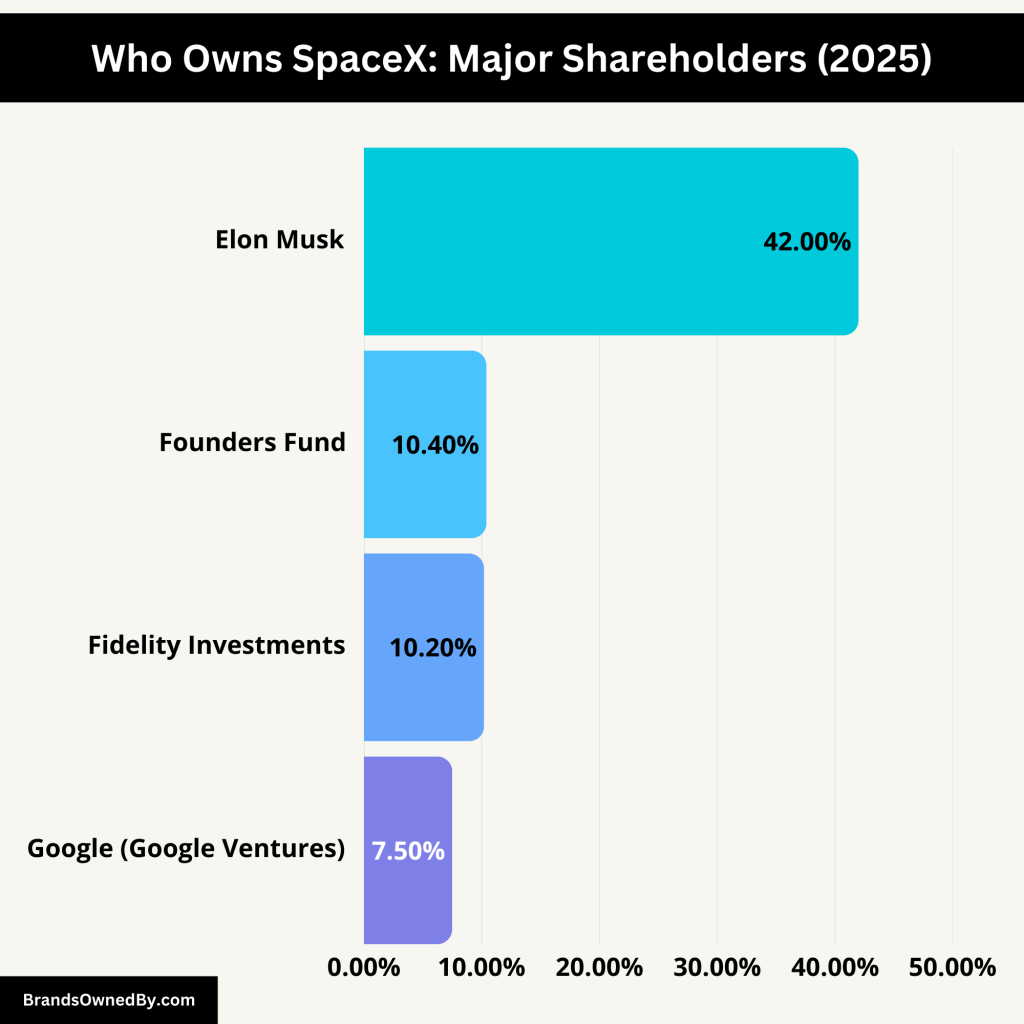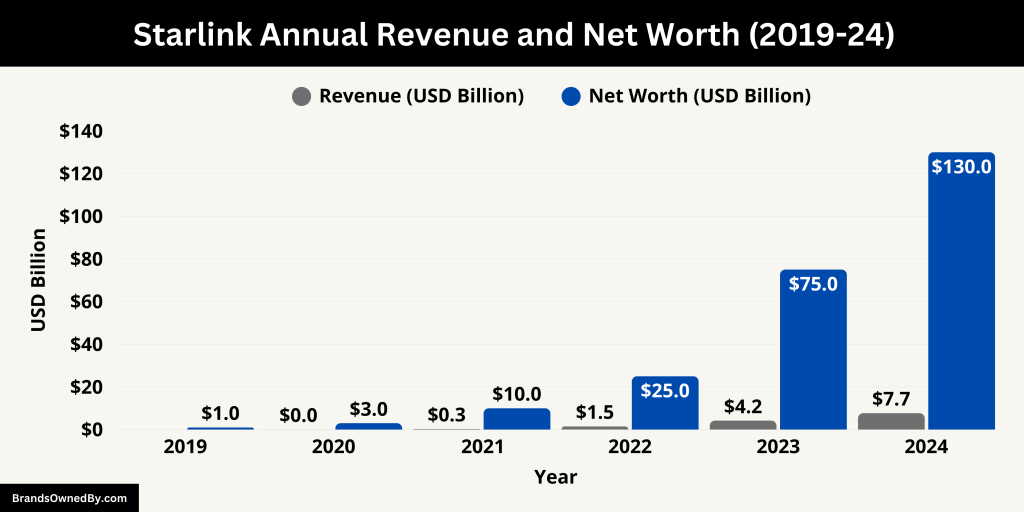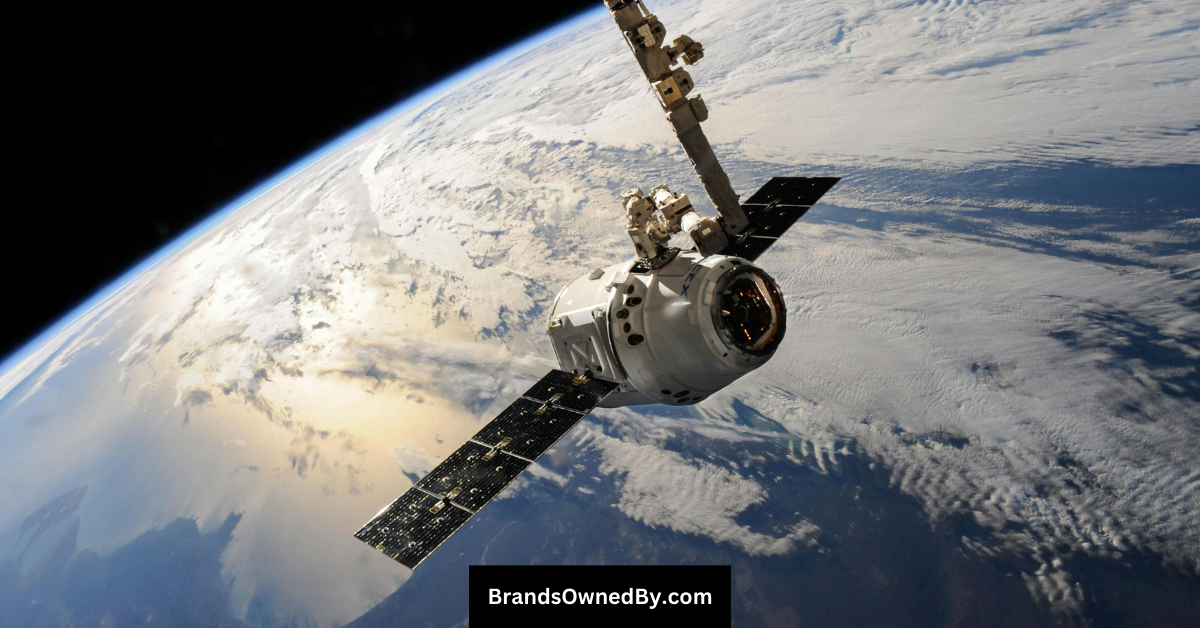Starlink is one of the most well-known satellite internet services in the world today. If you’ve ever wondered who owns Starlink, the answer leads directly to SpaceX and its famous founder. This article explores the ownership, revenue, leadership, and the broader business Starlink is part of.
History of Starlink
SpaceX announced Starlink in 2015 as a project to build a satellite internet constellation. The goal was to provide high-speed, low-latency internet across the globe, especially in rural and remote areas.
The first two prototype satellites, named Tintin A and B, were launched in 2018. The full deployment began in 2019. Since then, thousands of satellites have been launched into low Earth orbit.
As of 2025, Starlink is one of the largest satellite networks in existence, providing coverage in over 70 countries.
Who Owns Starlink?
Starlink is not an independent company. It is a wholly owned division of Space Exploration Technologies Corp. (SpaceX). This means all assets, revenues, and operations of Starlink fall under the legal and financial umbrella of SpaceX.
The majority ownership of SpaceX lies with Elon Musk, who founded the company in 2002. Through his equity stake and high voting power, Musk has full control over Starlink’s strategic direction and decision-making.
Although Starlink has grown into a massive business in its own right, it has not been spun off into a separate legal entity as of 2025.
Parent Company: SpaceX
SpaceX is the parent company of Starlink. SpaceX itself is a private aerospace and space transportation firm headquartered in Hawthorne, California. The company has developed various major products including the Falcon rockets, Dragon spacecraft, and the Starship system.
Starlink is SpaceX’s most commercially scalable venture. While SpaceX was originally focused on space transportation, Starlink is helping it fund ambitious goals like Mars colonization. By selling internet services globally, SpaceX generates steady, recurring revenue—something rocket launches do not offer.
As of now, all Starlink business activities, intellectual property, and infrastructure are owned and operated by SpaceX.
Structure of Ownership and Control

Elon Musk
He holds about 42% of SpaceX equity and controls approximately 79% of voting rights. This gives him absolute control over all internal projects, including Starlink.
Institutional Shareholders
Other notable investors in SpaceX (and indirectly in Starlink) include:
- Fidelity Investments
- Alphabet (Google’s parent company)
- Baillie Gifford
- Andreessen Horowitz
- Sequoia Capital
- Gigafund
Each of these investors participated in various funding rounds. Their stakes have diluted over time as new investors joined. Still, they remain influential in financial decisions, especially in fundraising and IPO planning.
Legal Entity and Branding
While Starlink operates under the SpaceX corporate structure, it maintains its own brand identity, website, and product offerings. Customers deal with Starlink Services, LLC, a SpaceX subsidiary, for billing and service contracts.
This is a legal structuring technique that enables SpaceX to isolate liabilities, simplify accounting, and prepare for a potential public listing in the future. However, full ownership of this LLC remains with SpaceX.
How Starlink Works?
Starlink is a satellite internet service powered by a constellation of low Earth orbit (LEO) satellites. Unlike traditional satellite internet, which relies on geostationary satellites orbiting much higher altitudes, Starlink’s satellites orbit at much lower altitudes, typically between 340 and 1,200 kilometers above Earth.
This system provides faster speeds, lower latency, and better performance in remote and rural areas compared to traditional satellite internet providers.
The Starlink Satellite Constellation
Starlink operates using a network of thousands of small satellites in low Earth orbit. The satellites form a constellation that continuously orbits the Earth, ensuring global coverage.
- Low Earth Orbit (LEO): The satellites orbit much closer to Earth compared to traditional geostationary satellites, which are located 35,786 km above Earth. This lower altitude significantly reduces latency.
- Coverage: The satellites are evenly distributed across the globe, providing coverage to remote and underserved regions, including rural areas, oceans, and airplanes in flight.
User Terminals (Starlink Dish)
The Starlink Dish is a small, self-aligning satellite dish that connects customers to the satellite network. It’s designed to be easy to install, typically requiring little more than setting it up outdoors with a clear view of the sky.
- Self-Aligning: The dish automatically adjusts its position to align with the satellites overhead, ensuring the best possible signal strength.
- Weatherproof: The dish is designed to withstand all types of weather, including rain, snow, and extreme temperatures.
- Setup: Customers simply need to plug in the dish, power it, and follow the setup instructions. The dish will automatically search for the nearest satellites to establish a connection.
How Satellite Communication Works?
Signal Transmission
- Satellite to Dish: The Starlink satellites transmit radio frequency signals to the dish installed on the customer’s property.
- Dish to Router: Once the signal reaches the dish, it is then routed to the Wi-Fi router provided by Starlink, allowing multiple devices to connect to the internet.
Low Latency
The key difference with Starlink’s system is the low latency. Due to the low Earth orbit (LEO) of its satellites, the signal travels a much shorter distance to and from the dish, resulting in significantly lower latency compared to traditional satellite internet. This makes activities like online gaming, video conferencing, and streaming possible with minimal delay.
Data Routing Through Ground Stations
While the satellites are the primary means of transmitting data to and from users, ground stations play a crucial role in the overall system. These ground stations are located around the world and act as gateways between Starlink’s satellites and the rest of the internet.
- Connection to the Internet Backbone: The ground stations are connected to the global internet infrastructure, allowing data to be routed from the satellites to servers and networks on the internet.
- Multiple Ground Stations: Starlink has built a global network of ground stations that ensures reliable, high-speed connectivity.
Starlink Network and Bandwidth
Starlink’s satellite constellation is continually evolving, with SpaceX planning to launch thousands more satellites to improve network capacity, coverage, and bandwidth.
- More Satellites, More Capacity: As Starlink adds more satellites to its constellation, the system’s overall bandwidth and ability to serve more users increases. Each satellite can cover a portion of the Earth’s surface, ensuring there is always coverage available for the customer.
- Dynamic Load Balancing: The system uses dynamic load balancing to allocate bandwidth efficiently, ensuring that users have a stable connection even as demand fluctuates.
Starlink for Different Sectors
Residential Service
Starlink’s primary customer base is residential users in areas where traditional internet services are unavailable or unreliable. With Starlink, customers in remote or rural regions can now access high-speed internet with speeds ranging from 50 Mbps to 250 Mbps and latency between 20 to 40 milliseconds.
Business Solutions
Starlink also provides high-speed internet for businesses, particularly those in remote areas or industries like maritime and aviation. The service is tailored to meet the needs of corporate clients who require constant and stable internet for operations in areas without other reliable service options.
Government Applications
Starlink has become a key service for government operations, where it provides secure communication for networks. Government contracts and partnerships are crucial to Starlink’s business growth, making it a global communication tool in crisis situations.
Who is the CEO of Starlink?
Elon Musk – CEO of SpaceX and de facto CEO of Starlink
Starlink does not have a separate CEO. It operates as a division within SpaceX, and thus falls under the leadership of Elon Musk, who is the Chief Executive Officer of SpaceX. As of 2025, Musk continues to serve in that role. He has led SpaceX since founding it in 2002.
Because Starlink is not an independent legal entity, Musk is effectively Starlink’s top executive and decision-maker. All high-level strategic decisions, funding allocations, satellite deployment schedules, international expansion, and pricing models for Starlink go through Musk.
He has stated publicly that he considers Starlink to be critical for generating long-term revenue to fund SpaceX’s Mars colonization mission.
Gwynne Shotwell – President and COO of SpaceX
Although Elon Musk is the face and strategic leader of SpaceX and Starlink, much of the day-to-day business operations are managed by Gwynne Shotwell, the President and Chief Operating Officer of SpaceX.
Shotwell plays a central role in:
- Regulatory compliance (especially with the FCC and international telecom bodies)
- Customer acquisition and B2B relationships
- Government contracts for Starlink (including military and NASA-related deals)
She is considered the second-most powerful executive in SpaceX and is instrumental in Starlink’s commercial and operational success.
Past Leadership Roles and Management Structure
Since its inception, Starlink has always been part of SpaceX and has never had an independent CEO or external management team.
Key management under Musk and Shotwell includes:
- Mark Juncosa – Vice President of Vehicle Engineering and a key figure in satellite development
- Jonathan Hofeller – Vice President of Starlink Business Development
- Lauren Dreyer – Senior Director of Starlink Commercial Sales
These individuals lead specific departments but ultimately report to the senior executive team led by Musk and Shotwell.
Who Controls Starlink?
Elon Musk controls Starlink through his majority voting power in SpaceX. He owns roughly 42% of the company’s equity, but more importantly, he holds nearly 79% of the voting shares due to a dual-class share structure.
This allows him to:
- Appoint board members
- Block any sale, spin-off, or IPO of Starlink without his approval
- Set long-term strategies for Starlink’s global expansion, pricing, and product innovation
SpaceX Board of Directors
The board of SpaceX also exercises control over Starlink’s direction. As of 2025, known or reported members include:
- Elon Musk – Chair of the board
- Gwynne Shotwell
- Luke Nosek – Co-founder of PayPal and founder of Gigafund (early investor)
- Antonio Gracias – Investor and close advisor to Musk
- Representatives from institutional investors such as Fidelity and Sequoia Capital
The board provides oversight on financial strategy, governance, and major corporate actions like acquisitions or IPO planning.
Government and Regulatory Oversight
While Elon Musk has firm control over Starlink, regulatory bodies such as the Federal Communications Commission (FCC) in the U.S. and telecom regulators in foreign markets also influence what Starlink can do.
For example:
- Starlink must receive licenses to operate in each country.
- Governments can restrict or ban the service (as seen in India and some African nations).
- Starlink also receives contracts from U.S. defense agencies, which adds further compliance responsibilities.
Control Through Corporate Structure
Legally, Starlink operates under Starlink Services, LLC, a wholly owned subsidiary of SpaceX. This structure:
- Keeps Starlink’s operations distinct for accounting and tax purposes
- Prepares SpaceX for a possible public listing of Starlink in the future
- Provides SpaceX full control without needing external board approvals or shareholder votes.
Annual Revenue and Net Worth of Starlink

In 2024, Starlink achieved an estimated revenue of $7.7 billion, marking an 83% increase from the previous year. This growth was driven by a surge in subscribers, reaching approximately 4.6 million by the end of the year. The revenue breakdown for 2024 is as follows:
- Consumer Services: $4.8 billion
- Hardware Sales: $1.3 billion
- Government Contracts: $1.6 billion
This performance positioned Starlink as the leading revenue generator within SpaceX, surpassing its launch services.
2025 Revenue Projection: $11.8 Billion
For 2025, Starlink’s revenue is projected to reach $11.8 billion, reflecting a 53% year-over-year growth. This projection is based on the following anticipated contributions:
- Consumer Services: $7.5 billion
- Hardware Sales: $1.3 billion
- Government Contracts: $3.0 billion
The increase in government contracts is notably influenced by a $537 million agreement with the U.S. Department of Defense to provide services for Ukraine’s military forces through 2027.
2025 Net Worth and Valuation
As of May 2025, Starlink’s estimated valuation stands at $175 billion, contributing significantly to SpaceX’s overall valuation of $350 billion. This valuation is supported by Starlink’s expanding subscriber base, projected to reach 8 million by the end of 2025, and its diverse revenue streams across consumer, hardware, and government sectors.
Here’s a detailed table showing Starlink’s estimated annual revenue and valuation/net worth over the past 10 years (2018–2025):
| Year | Estimated Revenue (USD) | Estimated Valuation / Net Worth (USD) |
|---|---|---|
| 2018 | $0 | $500 million (internal valuation) |
| 2019 | $0 | $1 billion (first test satellites) |
| 2020 | ~$15 million | $3 billion (initial consumer rollout) |
| 2021 | ~$300 million | $10 billion |
| 2022 | ~$1.5 billion | $25 billion |
| 2023 | ~$4.2 billion | $75 billion |
| 2024 | ~$7.7 billion | $130 billion |
| 2025 | ~$11.8 billion (projected) | $175 billion (estimated) |
Brands Owned by Starlink
Below is a list of brands owned and operated by Starlink as of 2025:
| Brand | Description | Target Market | Key Features |
|---|---|---|---|
| Starlink Internet Service | Primary service offering high-speed satellite internet. | Residential customers, rural and underserved areas, remote locations. | Low latency, high-speed internet, global coverage, scalable for increasing demand. |
| Starlink Business Solutions | Tailored internet services for businesses and enterprises. | Businesses, enterprises, government agencies. | Reliable, high-speed internet for corporate applications, secure communication, and government contracts. |
| Starlink Maritime | Internet service designed for ships and maritime vessels. | Cruise ships, container vessels, fishing boats, and maritime operators. | Global coverage, low latency, and high-speed internet at sea for operational and passenger connectivity. |
| Starlink Aviation | Internet service for aircraft, including commercial and private planes. | Airlines, private jet owners, government aircraft. | High-speed in-flight internet, real-time communication, and entertainment options. |
| Starlink Satellite Terminals | Hardware devices used to connect customers to the Starlink satellite network. | Residential, business, and military customers. | Self-aligning, weatherproof, easy to install, and durable satellite dishes. |
| Starlink Residential Plans | Internet plans for individual households with various speed tiers. | Homeowners, rural families, and individuals in areas with limited connectivity. | Flexible pricing, scalable service, high-speed internet for multiple users, and easy installation. |
Starlink Internet Service
Starlink Internet Service is the primary brand and service offering under Starlink. It provides high-speed satellite internet primarily aimed at underserved and rural areas around the world. Since its commercial launch in 2020, Starlink has grown its subscriber base rapidly, providing internet access to users in over 40 countries.
- Target Market: Rural and underserved areas, remote locations, maritime, and aeronautical sectors.
- Unique Selling Proposition (USP): Unlike traditional ISPs that rely on cable or fiber optics, Starlink delivers internet via a constellation of low Earth orbit (LEO) satellites. This results in lower latency and higher speeds compared to traditional satellite internet.
- Expansion: Starlink is expanding into maritime and aeronautical internet solutions, providing service to airlines, ships, and military applications.
Starlink Business Solutions
Starlink Business Solutions offers high-speed internet packages tailored to businesses, enterprises, and government contracts. This brand targets a more specialized market that needs reliable internet in areas where terrestrial options are either slow or unavailable.
- Corporate and Enterprise Clients: Starlink’s business packages cater to industries such as agriculture, shipping, media, and finance, where a constant and stable internet connection is essential.
- Government and Defense: The business brand is also heavily involved in contracts with government agencies (e.g., the U.S. Department of Defense) for secure communications in conflict zones and other areas where traditional infrastructure is lacking.
Starlink Maritime
Starlink Maritime provides internet access to ships and maritime vessels. This division of Starlink offers high-speed, low-latency satellite internet to ships on the ocean, enabling real-time communication, navigation, and data transfer without relying on expensive and unreliable maritime satellite services.
- Target Market: Cruise ships, container vessels, fishing boats, and any vessel operating in international waters.
- Service Features: Starlink Maritime offers global coverage, high-speed connectivity, and low latency at sea, helping crews and passengers stay connected.
Starlink Aviation
Starlink Aviation is another targeted extension of Starlink’s services for the aviation industry. This service provides high-speed internet to aircraft, including private jets and commercial airlines. It allows for in-flight connectivity, which is becoming increasingly demanded by passengers who expect internet access while traveling.
- Target Market: Commercial airlines, private jet owners, and government aircraft.
- Service Features: Fast internet access at altitudes, enabling browsing, streaming, and business operations while in-flight.
Starlink’s Satellite Terminals (Hardware Brand)
Starlink Satellite Terminals (also known as dishes) are another key “brand” in Starlink’s ecosystem. These hardware devices are used to connect customers to the Starlink satellite network.
- Target Market: Residential, business, and military customers across the globe.
- Service Features: The terminals are self-aligning, easy to install, and weatherproof, making them ideal for a wide range of environments from remote homes to urban rooftops.
- Technology: The hardware is constantly evolving, with Starlink Dish 2.0 being the latest version that promises faster speeds, lower latency, and improved resistance to environmental factors.
Starlink Residential Plans
Starlink Residential is a sub-brand that caters specifically to individual households. It offers flexible pricing plans and packages that allow users to choose between various levels of internet speeds and data capacities based on their needs.
- Pricing: Residential plans vary from entry-level packages for basic browsing and streaming to premium packages that support heavy usage like gaming, video conferencing, and multiple simultaneous devices.
- Service Expansion: Starlink Residential is expanding into new markets and is continuously increasing its coverage area, which now spans across North America, Europe, Asia, and parts of Africa and Latin America.
Final Thoughts
To answer who owns Starlink clearly: Starlink is a division of SpaceX, and Elon Musk is the largest shareholder and decision-maker. Through his control of SpaceX, Musk has full authority over Starlink’s present and future.
The business has grown rapidly, with millions of users and billions in revenue. While it remains part of a private company, Starlink is expected to have a big role in future global communications and connectivity.
FAQs
Is Starlink made by Elon Musk?
Yes, Starlink is a project created by SpaceX, which was founded by Elon Musk. Starlink is a satellite internet service developed by SpaceX to provide high-speed internet to underserved areas globally. Musk has been integral in its development, though the company is technically part of SpaceX.
Who owns the Starlink company?
Starlink is owned by SpaceX, which is a privately-held aerospace manufacturer and space transportation company founded by Elon Musk. Although Starlink operates as a separate division within SpaceX, it is fully controlled by Musk’s company.
Who is Starlink’s biggest competitor?
Starlink’s biggest competitors include Amazon’s Project Kuiper, which aims to provide satellite-based internet services, and OneWeb, a company also deploying a network of satellites for global internet coverage. Other terrestrial competitors in the broadband industry, such as Viasat and HughesNet, also compete in satellite internet services, although Starlink’s lower latency gives it a competitive edge.
Is Starlink faster than 5G?
Starlink can offer speeds ranging from 50 Mbps to 250 Mbps, depending on the user’s location and network congestion. 5G networks, on the other hand, can offer much higher speeds, often reaching up to 1 Gbps or more in optimal conditions. However, Starlink can provide more consistent coverage in rural or remote areas, whereas 5G is more effective in urban locations with dense infrastructure.
Who invented Starlink?
Starlink was invented by Elon Musk and developed by SpaceX. Musk envisioned Starlink as a way to fund SpaceX’s larger missions, including interplanetary travel, and as a solution for providing global internet coverage to underserved areas.
Does Tesla use Starlink?
There are no official reports that Tesla uses Starlink for its operations, but Elon Musk, as the CEO of both companies, has explored potential synergies. Some reports suggest that Tesla vehicles may benefit from Starlink’s satellite internet in the future, particularly for improving navigation, connectivity, and over-the-air software updates in remote areas.
How many Starlink satellites are in orbit?
As of 2025, Starlink has over 4,000 satellites in orbit, with plans to launch as many as 42,000 satellites as part of its ongoing global internet constellation. These satellites are deployed in low Earth orbit (LEO) to provide high-speed internet with low latency.
Is Elon Musk the founder of Starlink?
While Elon Musk is not the official “founder” of Starlink (as the project was developed under SpaceX), he is the visionary and driving force behind the initiative. Musk conceived the idea as part of SpaceX’s larger mission to provide global satellite internet and help fund SpaceX’s ambitious space exploration goals.
Who owns Starlink satellites?
The Starlink satellites are owned by SpaceX, the parent company of Starlink. SpaceX operates and controls the constellation, and its engineers oversee the design, deployment, and management of the satellites. The satellites are used to provide internet access to various customers worldwide under the Starlink brand.
Is Starlink a public company?
No, Starlink is not publicly traded. It is a division of SpaceX, which is also a private company.
Will Starlink become a separate company?
Elon Musk has mentioned the possibility of spinning off Starlink as a public company. However, no official timeline has been confirmed.
How much of Starlink does Elon Musk own?
Elon Musk owns roughly 42% of SpaceX and controls nearly 79% of its voting power. Through this ownership, he effectively controls Starlink.
Can I invest in Starlink stock?
Not directly. Since Starlink is not public, individual investors cannot buy its stock unless SpaceX or Starlink holds an IPO in the future.
How does Starlink make money?
Starlink earns revenue through monthly subscription fees for its satellite internet services. It also signs contracts with governments and enterprise clients.

